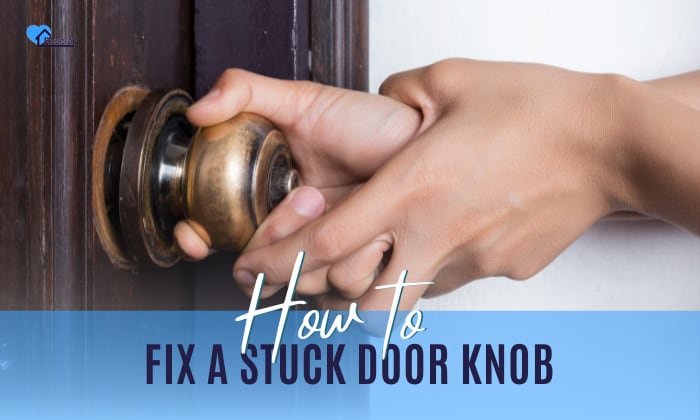
Door knobs, especially in high-traffic areas, tend to take a lot of wear and tear. If you’re noticing excessive movement, it’s usually due to loose screws, damaged parts, or even a misalignment. In this guide, we’ll dig into diagnosing and fixing that wobbly knob step-by-step. So grab your tools, and let’s get started!
Understanding the Parts of Your Door Knob
Before jumping straight into fixing that wiggly doorknob, it helps to know what you’re working with. Most interior door knobs have several key components:
- Knob: The part you grab to open the door.
- Spindle: A metal rod that connects the two knobs.
- Escutcheon: The decorative plate that hides the mounting hardware.
- Latch mechanism: The part that locks and releases the door.
The way these parts fit together is essential. If one is out of place, you might find yourself wrestling with a knob that just won’t cooperate. Understanding these basics makes troubleshooting much easier.
Step 1: Check for Loose Screws
One of the simplest causes of a wiggly doorknob is loose screws. Over time, with all that turning and pulling, screws can become a bit too relaxed. Here’s how to check:
1. Look for visible screws: Most knobs have screws on the inside or back. Grab a screwdriver that fits.
2. Tighten them: Start with a gentle twist. If they’re too loose, you’ll feel the tension build as you tighten.
3. Don’t overtighten: Doing so can strip the screws or damage the knob. Just make them snug.
If this resolves the issue, fantastic! If not, there could be more to investigate.
Step 2: Inspect the Latch Mechanism
If your doorknob still wiggles after tightening the screws, the next thing to check is the latch mechanism. A misaligned latch can cause that annoying wiggle. Here’s how to tackle this:
1. Remove the knob: Start by unscrewing the knobs from both sides. You might need to pull them apart.
2. Examine the latch: Check if it’s sitting properly in the door frame. You should see it fully extending into the latch plate.
3. Adjust if necessary: If it’s not aligned, you can adjust it by shifting the position of the latch inside the door or repositioning the strike plate on the frame.
Getting this right means the knob fits snugly into the door frame, reducing that jiggle when you turn it.
Step 3: Check for Wear or Damage
Sometimes, it’s not just loose screws or a misaligned latch to blame. Over time, components can wear out or get damaged. Here’s how to spot this:
1. Look for cracks or chips: Inspect the knobs and the spindle closely. Any visible damage can compromise stability.
2. Check the latch assembly: If it’s rusty, bent, or completely broken, it might require replacement.
3. Replacement parts: If you identify damage, you can often find replacement parts online or at a local hardware store. Make sure to take the old part with you to ensure you get the correct size.
Replacing worn parts restores the stability of your doorknob, giving it that solid feel you want.
Step 4: Lubricate the Mechanism
Sometimes, a wiggly doorknob is just asking for a little TLC. If you’ve checked for loose screws and inspected for damage but still feel some resistance, a bit of lubrication might do the trick. Here’s how:
1. Get some lubricant: Use a silicone-based spray or a graphite lubricant. Avoid oil-based products, as they can attract dust and grime.
2. Apply carefully: Spray or apply the lubricant to the moving parts of the latch and spindle while turning the knob to ensure it penetrates the mechanisms.
3. Wipe away excess: After letting it sit for a few minutes, wipe away any excess lubricant to keep things neat.
This quick fix can often solve the problem by reducing friction and allowing parts to move smoothly.
Step 5: Consider Upgrading Your Knob
If after all that you’re still struggling with a wiggly doorknob, it might be time to consider an upgrade. Modern knobs feature improved designs that can provide a better fit and longer-lasting durability. Here’s what to look for:
1. Quality Materials: Look for knobs made from solid materials, like brass or sturdy alloys, to ensure increased resilience against wear and tear.
2. Design Features: Some newer models come with mechanisms designed to resist wobbling and enhance security.
3. Easy Installation: Many new knobs also offer hassle-free installation, meaning you can replace them yourself without needing a professional.
This could not only solve your wiggly issues but also enhance the overall look of your home!
Dealing with a wiggly doorknob can be frustrating, but most issues are fixable with a bit of patience and the right tools. By checking for loose screws, inspecting the latch mechanism, looking for wear, and applying lubricant, you can make significant improvements. If all else fails, consider upgrading to a more robust knob that fits your needs.
Remember, a well-functioning doorknob isn’t just about convenience; it adds to the safety and comfort of your home. So take the time to diagnose the problem, and before you know it, you’ll have a knob that feels just right!
